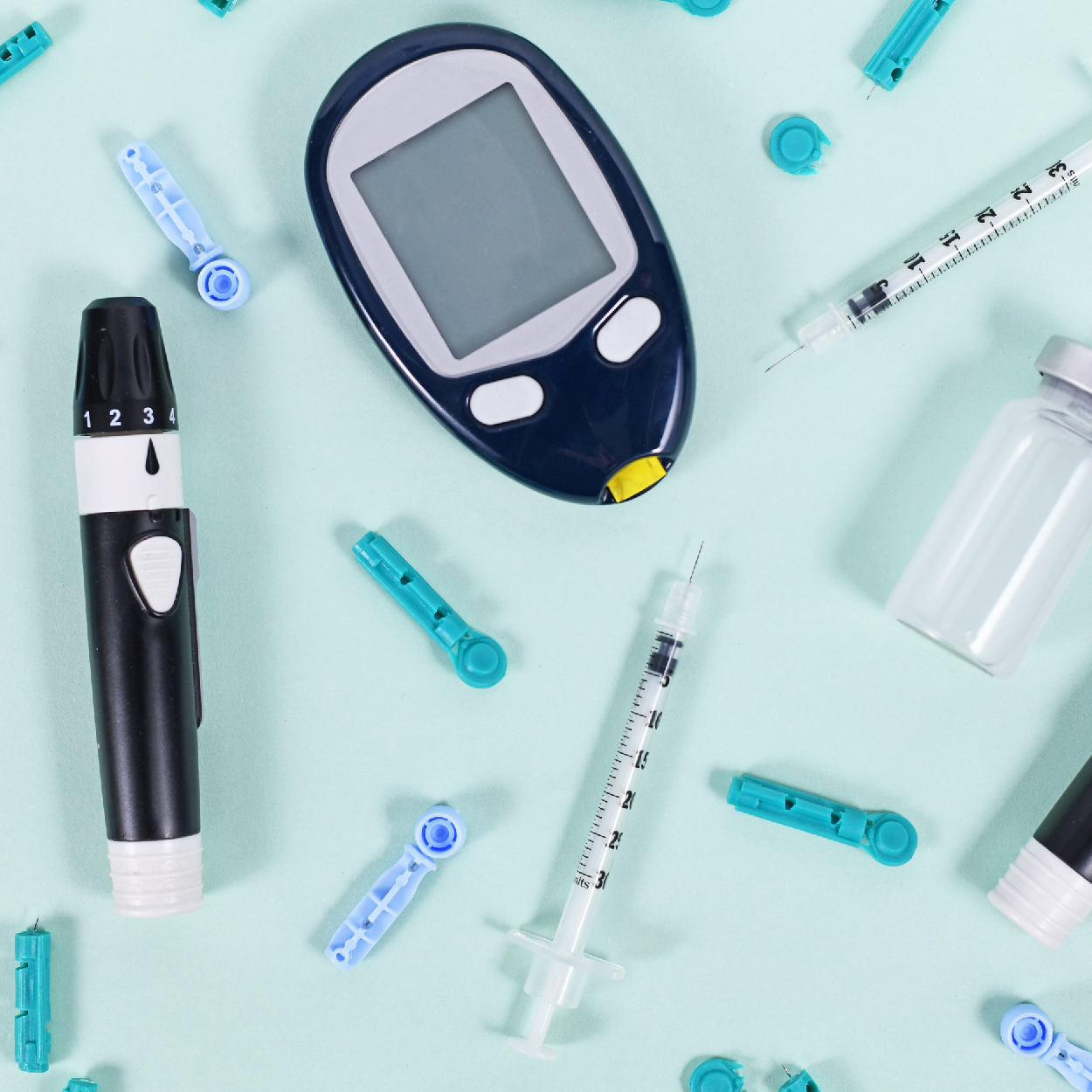Illnesses and health issues can be hard for everyone. We all have concerns for our children and the children we dream of having. People with diabetes often have special concerns: Will my children develop diabetes because I have it? What if I develop gestational diabetes? My son is engaged to a woman with diabetes, I have one child with diabetes, should I be concerned about my other children? If diabetes “runs high” in my family, what can we do to prevent it in the little ones? Let’s proceed with this interesting topic. My goal is to shed light in this area and pass on hope to many that may be concerned.
Diabetes type 1 and diabetes type 2 are actually two different diseases. They each have unique genetic patterns and likelihoods of potentially passing the disease down the family tree. We will discuss both types of diabetes as well as gestational diabetes.
Gestational Diabetes
Gestational Diabetes is diabetes that is diagnosed during a pregnancy. If diabetes is diagnosed at the first prenatal visit using standard criteria for type 2 diabetes, it is considered type 2 diabetes not gestational diabetes. If diabetes appears after the first prenatal visit, then gestational diabetes would most likely be the diagnosis. It is recommended that the screening for gestational diabetes take place between the 24-28th week of pregnancy. (1)
Will having a history of gestational diabetes affect my children?
With the statistics in the United States showing that up to 18 percent of pregnancies are affected by gestational diabetes, this is a very important question to ask. (2)
In a receipt study published July of 2014, researchers studied 255 obese adolescents. Two hundred and ten (210) of the subjects were not exposed to gestational diabetes in utero and 45 were exposed. In the group that was not exposed, 8.6 percent developed impaired glucose tolerance or type 2 diabetes. In the group that was exposed, 31.1 percent developed impaired glucose tolerance or type 2 diabetes. The exposed group also showed a reduction in the sensitivity to insulin and a reduction in beta cell function. The research team concluded that the obese subjects exposed to gestational diabetes in the womb showed an inability of their beta cells to respond to decreasing levels of insulin sensitivity. Results were dramatic! The children in the study exposed to gestational diabetes had at least a 5 times greater risk of impaired glucose tolerance than those not exposed. The authors suggest that offspring of pregnancies affected by gestational diabetes should be screened for impaired glucose tolerance and impaired fasting glucose. They suggest that taking steps to prevent full blown diabetes should be encouraged for these children. Obese children of pregnancies affected by gestational diabetes should be screened during the mid-pubertal period with follow-up as necessary. (3)
For more information on gestational diabetes visit my blog What is Gestational Diabetes and Six Steps to Help Avoid Type 2 Diabetes After.
Recommendations for helping prevent type 2 diabetes in children include:
- Encouraging your whole family to follow a healthy meal plan. If your child is overweight, ask your doctor for a recommendation to a dietitian to help with weight control and diabetes prevention.
- Ask your child’s doctor if it is acceptable for your child to exercise at least one hour per day. Find pleasant, enjoyable activities that both you and your child can enjoy together. Lead by example and support your child in healthy physical activates.
- Limit your child’s television, video and computer time. Encourage activities that help your family move. (4)
Type 1 Diabetes
Diabetes type 1 does have a genetic component but it is not as prominent as one might think. Experts conclude that there is a predisposition to type 1 diabetes in some individuals but something in the environment triggers the disease expression. Some of the potential triggers include, diet, climate, viruses and bacterial infections. If type 1 diabetes was unquestionably genetic then 100% of identical twins with type 1 would have type 1. This does not happen. (5) Statistics show that over 85 percent of people who develop type 1 diabetes do not have a family history of the disease. (6) Countries such as Germany, Finland, the United States of America (USA) and Australia as well as the state of Florida in the USA have ongoing long range perspective studies researching infants with a high risk of developing type 1 diabetes. (7)
The task of figuring out what is going on in type 1 diabetes is immensely aided by these studies. Values of genetic risk vary among references. When this happens you will find more than one row to show you the data.
| Family member with type 1 diabetes | Percent risk (references in parentheses) |
| Sibling | 6 percent-this is 15 times higher than the risk for type 1 diabetes in the general population (6,8) |
| Identical twins | Greater than 50%, when followed over 30 years, at least 2/3 showed beta cell autoantibodies or type 1 diabetes. If the 1st twin develops diabetes after age 25 the risk for the second twin is less than 5%. If the first twin develops diabetes before age 6, the likelihood of the second twin developing diabetes is greater than 60%. (6) |
| Over 50 percent (8) | |
| Approximately 50 percent (5) | |
| Fraternal twins | 6-10 percent (6) |
| 11 percent (8) | |
| Father | 12 percent (6) |
| 6 percent (8,9) | |
| 4 percent (5) |
The exception to these numbers is If a parent has type 1 diabetes with the type 2 polyglandular autoimmune syndrome. This syndrome encompasses a number of immune system disorders such as thyroid disease and problems with the adrenal gland. With this classification, the offspring has a 50 percent chance of diabetes 1 as well as the other conditions that are part of the syndrome. Seeing a genetic specialist can help you with determining the risks of your child developing type 1 diabetes. (5)
Type 2 diabetes
Type 2 diabetes travels down the family tree at a distressing rate. The rate of risk of type 2 for identical twins is higher than with type 1 diabetes but it is still not 100%. Environmental steps can be taken to help decrease the risk of diabetes in a family even if the genetic pattern is high. Many studies have been carried out showing that lifestyle changes such as exercise and following a meal plan that helps family members keep a healthy weight can prevent type 2 diabetes or delay its onset. (9)
Lean people with type 2 diabetes appear to have a greater risk for their children developing type 2 diabetes. (10)
Risk of developing Type 2 Diabetes when another family member has Type 2 diabetes
| Siblings | as high as 33 percent (11) |
| Up to 40 percent by age 80 if one sibling has type 2 diabetes (12) | |
| Identical Twins | As much as 80 percent (5) |
| 70 percent (13) | |
| 90 percent (14) | |
| Fraternal twins | 20-30 percent (13) |
| 10 percent (14) | |
| One Parent | as high as 33 percent (11) |
| 15 percent (14) | |
| 40 percent-more if it is the mother (13) |
A subset of type 2 diabetes is called maturity onset diabetes of the young or MODY. If one parent has this type of diabetes there is a 50 percent risk that their offspring will develop it as well. (15)
For people interested in the genetics of diabetes, there is an online book titled: “The Genetic Landscape of Diabetes” that was published in 2004. Although this book is 10 years old it provides excellent information on the genetics of many forms of diabetes. We at DiabetesCare.net hope this information helps your understanding of the genetics of diabetes.




